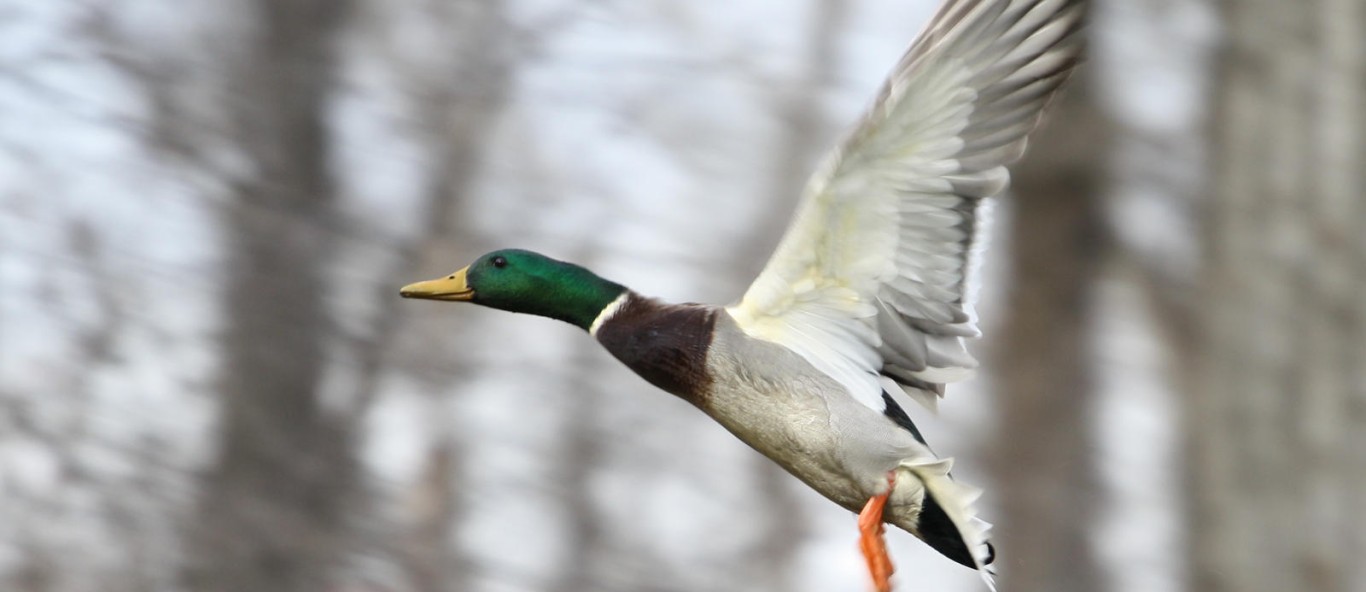Mallard Duck

Mallard
Anas platyrhynchos
- A Mallard’s outer feathers are waterproof, thanks to oil that’s produced in a gland near the tail, that they then spread over their feathers with their bill.
- A male Mallard is known as a “drake” and a female is known as a “hen”.
- Migrating Mallards have been clocked flying at 55 miles per hour, slightly faster than the average waterfowl.
Population: Although the Mallard is a popular game bird for hunters, it retains the title as the most numerous duck species in North America with an estimated population of 10 million. They are also one of the most widespread waterfowl species across the globe, with an estimated 47 million individuals.
Habits: Mallard ducks can be found near ponds, marshes, streams, and lakes – really any natural or man-made waterway The drake can be identified by the glossy green head and a white collar; the hen is streaked and mottled in shades of brown, tan, and black. Both have orange feet and an iridescent blue wing patch that's bordered by black and white, called a speculum.
Only the female makes the familiar "quack" duck call; the males do not really quack, but instead make softer, raspier calls.
Most Mallard populations will migrate when the seasons change in their environment. They will fly south, often following waterways, to warmer areas for the winter, and then they return northward in spring to nesting grounds. They can cover up to 800 miles during one night's eight-hour flight, and often fly in the famous “V” flock formation.
Diet: They are omnivorous, and feed on plants, invertebrates, fish, and insects. They are known as “dabbling” ducks because they eat by tipping underwater for food, with their head down and their feet and tail in the air, rather than diving. They have been known to forage for food on land at times as well.
Mating and Young: Mallard pairs typically only stay together for a season, with courtship beginning each fall and winter. After mating, the hen creates a nest, usually on the ground in a well-hidden, grassy area near the water. She lines her nest with vegetation and soft feathers that she plucks from herself. The average number of eggs laid at one time is nine, and the hen will lead them out of the nest and to the water shortly after hatching. The ducklings can swim and forage for food on their own right away, although they typically remain with their mother for several months.
Information from: https://abcbirds.org/bird/mallard/ & https://kids.nationalgeographic.com/animals/birds/facts/mallard-duck
To download this information: Click Here

